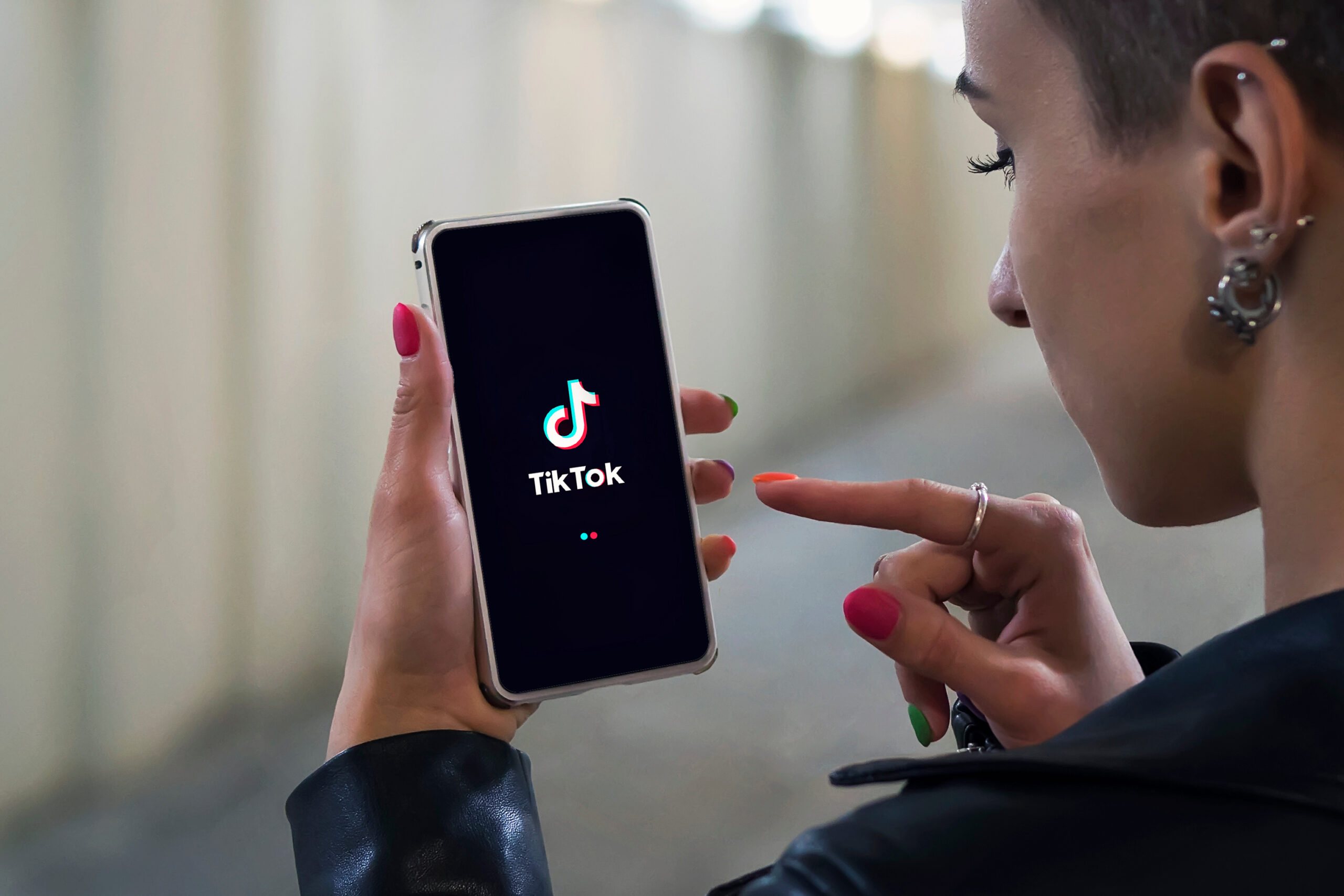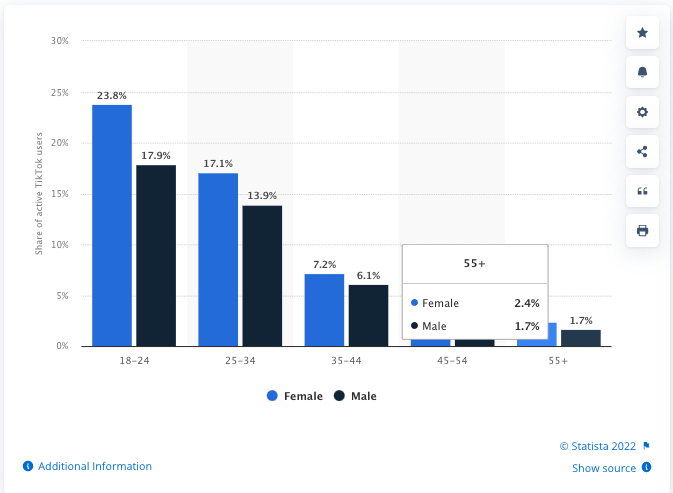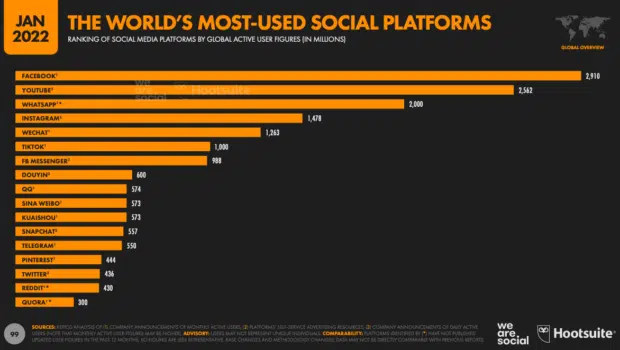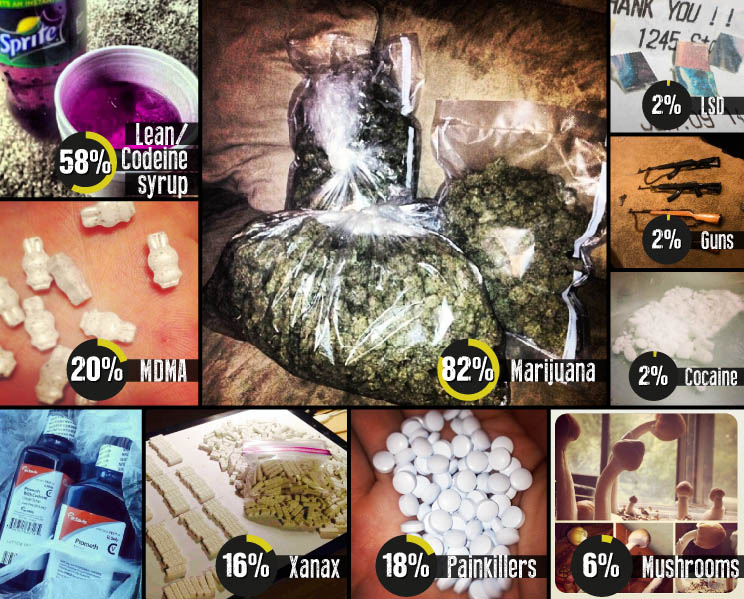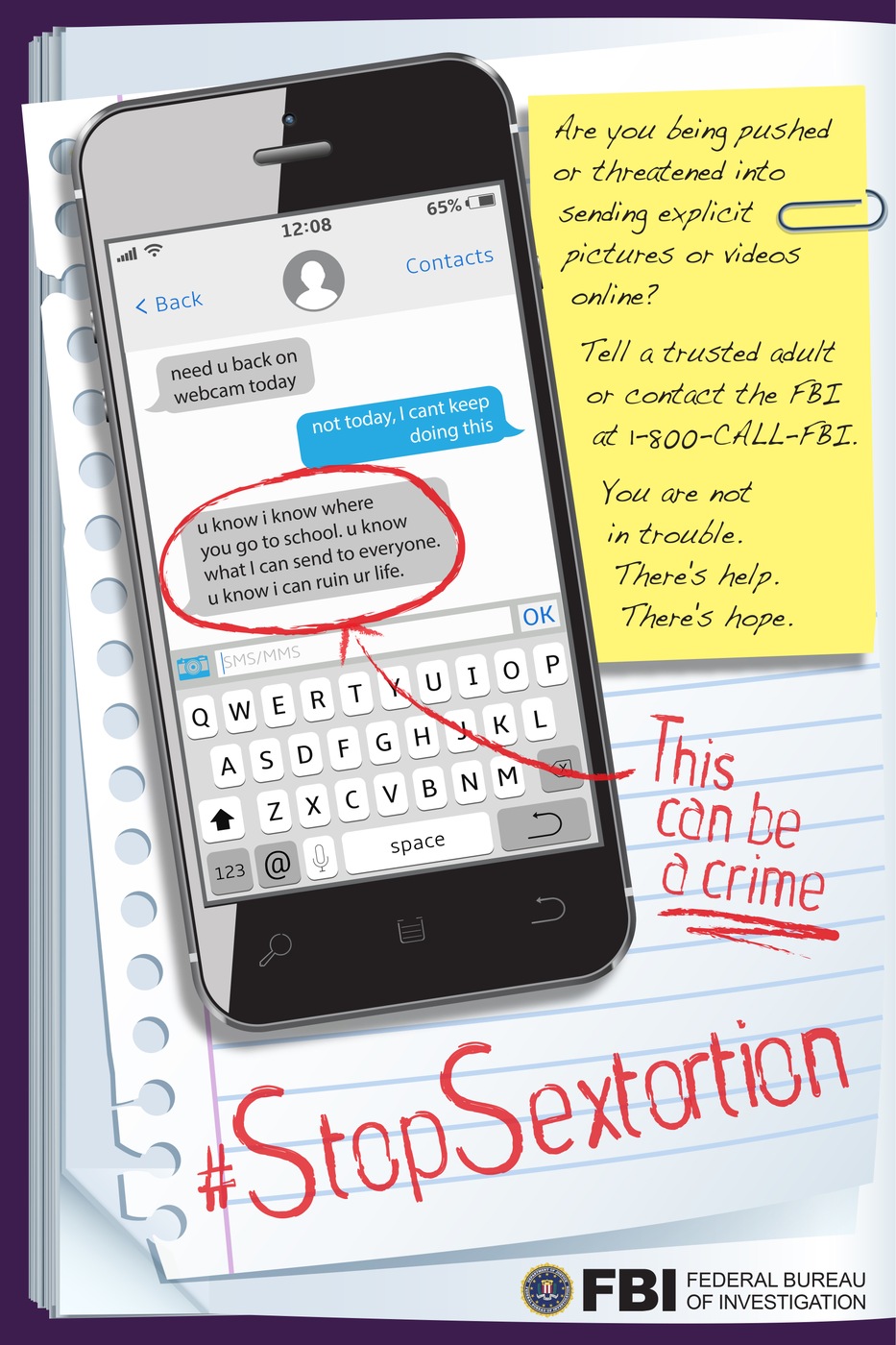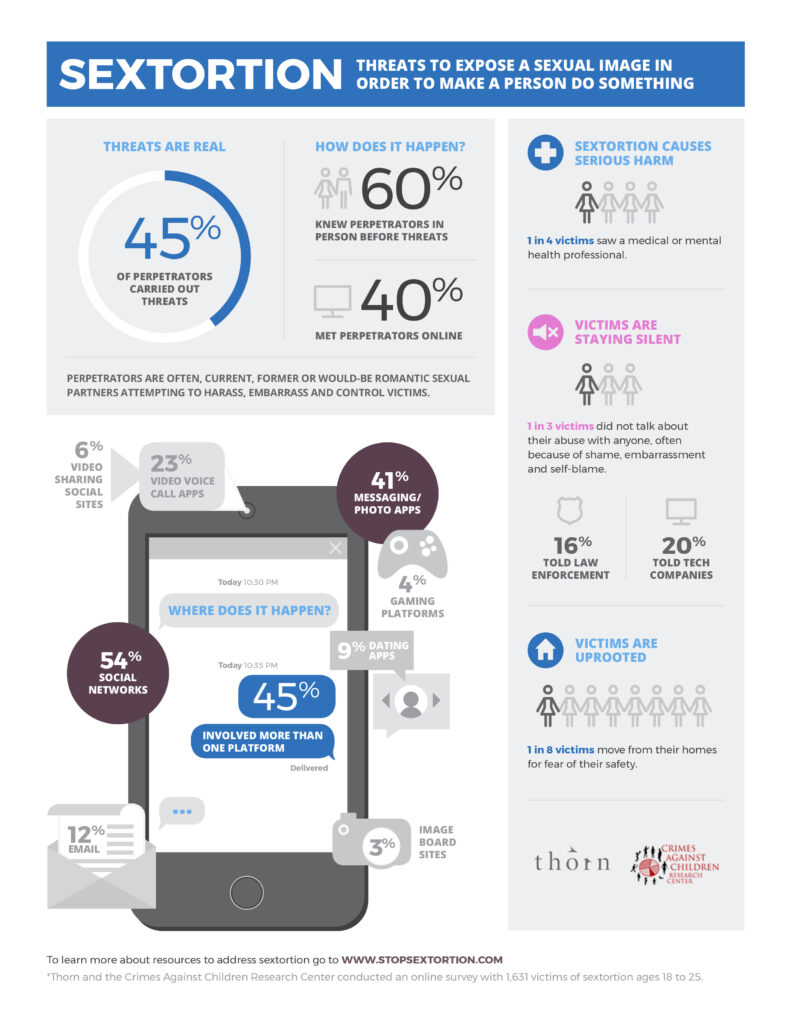Once again Tik Tok has been in the news. The app has received its share of scrutiny over the past few years. We will go into some this later in the blog. For now, let’s take a look at why it is so popular and with whom.
The app gained huge popularity during Covid while many people spent much more time at home and were looking for some entertainment. It has become an addicting app for people of all ages. The homemade videos in the app are not only fun to watch, they can be informative as well. You will find many tutorial “how to’s” from gardening to opinion pieces from individuals of all backgrounds. This is also a good reason not to overlook it when you are conducing online research on your case.
Distribution of TikTok users worldwide as of April 2022, by age and gender – Statistia 2022
According to Hootsuite, Tik Tok was the most downloaded app of 2021, with 656 million downloads. That was more than 100 million downloads than its runner up, Instagram. Tik Tok is the 6th most used social media app in the world as the chart below shows.
“The Chinese version of TikTok is called Douyin, which is number eight on this list. Douyin is actually the original app launched by parent company ByteDance in September 2016, who rolled out TikTok for international audiences in 2017. There are small differences between the two apps, but they look and function almost the same way.
Douyin boasts 600 million daily active users (most apps use monthly figures). When the two apps are combined, they reach fourth place on this list, ahead of Instagram and WeChat.” (Hootsuite)
Tik Tok Controversy
Like other social media apps, Tik Tok has had quite a bit of controversy. Back in 2021, a viral hoax about school violence spread rapidly across TikTok, alarming parents and children. Other hoaxes and harmful content, like videos promoting rapid weight loss, have proliferated on the platform and drawn criticism. (Hootsuite).
Tik Tok has addressed these issues by updating their Community Guidelines. They are committed to removing dangerous content from their site.
Most recently, the app was in the news again. It has been revealed that Tik Tok can track users as they visit other sites through the iOS app. The scary part is there is no way to know if they are storing this data and if it is being used somehow. Whenever something like this happens, it is always best to assume they can gather your data and act accordingly.
Priyadarsi Nanda of the University of Technology Sydney’s School of Electrical and Data Engineering said collecting information about keystrokes closely resembles the behaviour of keyloggers, a type of malware.
“Whichever website you go to, it takes your inputs,” he said. “This is definitely a concern for any app you don’t trust.”
A TikTok spokesperson told Guardian Australia the “report’s conclusions about TikTok are incorrect and misleading”.
“The researcher specifically says the JavaScript code does not mean our app is doing anything malicious, and admits they have no way to know what kind of data our in-app browser collects,” the spokesperson said.
“Contrary to the report’s claims, we do not collect keystroke or text inputs through this code, which is solely used for debugging, troubleshooting, and performance monitoring.”
Tik Tok is actually banned in several countries. Can you guess which ones? Click here to read more.
Tik Tok Marketing
Advertisers of all kinds are jumping in to this platform because of its popularity. I have even seen videos of Private Investigators discussing their services. When they do so, they are sharing their website links to make it easier for the user to make a purchase right within the app.
In the end, it is impossible for OSINT researchers to ignore this app, especially for the demographics stated here. Just add an extra layer of caution to your searches just in case.
